Factbox: Not Oct 7, Israeli genocide against Palestinians started in 1948
By Press TV Website Staff
Today, October 7, marks the first anniversary of Operation Al-Aqsa Flood when the Palestinian resistance redefined their long-standing struggle for the liberation of occupation territories.
The unprecedented military operation led by the Hamas resistance movement was followed by a series of massacres perpetrated by the settler-colonial regime in Tel Aviv using US-supplied weapons.
The death toll from the Israeli-American genocidal war on the Gaza Strip is nearly 42,000 now, most of them children and women, while more than two million Palestinians in the territory continue to be displaced.
Contrary to what the Western pundits say, it did not start on October 7, 2023. The genocide of Palestinians began decades ago and the Al-Aqsa Flood was a legitimate response to years of oppression.
According to historians, the plight of Palestinians is rooted in history, in the usurpation of their land, destruction of their homes, denial of their rights, and widespread ethnic cleansing.
The occupation and oppression of Palestinians is rooted in the 1917 Balfour Declaration, when then-British foreign secretary Arthur Balfour addressed a letter to Lionel Walter Rothschild, a figurehead of the British Zionist community, on the establishment of the so-called “Jewish land” in Palestine.
After the Palestinian land was illegally and forcibly confiscated by the British and handed over to the Zionist settlers, between 1936 and 1939, there was a massive Arab Revolt.
By the end of 1939, Britain and allied Zionist groups launched a full-fledged crusade against Palestinians – attacking them, destroying their villages, and forcing them to abandon their land.
In 1947, when the United Nations passed the so-called “Resolution 181” that called for the partition of the state of Palestine, Jews were non-entities in what came to be known as the Zionist entity.
What followed was Nakba, when hundreds of Palestinian villages and towns were burned down and tens of thousands of native Palestinians were killed in a massive ethnic cleansing.
According to historical records, almost 80 percent of Palestinian land was illegally seized by Zionist forces, and finally, on May 15, 1948, the Zionist entity formally came into being.
Nakba – the catastrophe
In the summer of 1948, Zionist forces occupied almost 80 percent of the Palestinian land, destroyed about 530 villages and cities, massacred at least 15,000 and further ethnically cleansed 750,000 Palestinians, roughly 80 percent of the total population.
The descendants of these expelled people, including millions of Muslims and hundreds of thousands of Christians, today live in six continents and the Zionist regime denies them any compensation.
In addition to illegal occupation, destruction and ethnic cleansing, Zionist terrorist formations are remembered for a series of brutal slaughters against the native Palestinian population during the Nakba.
Historical accounts suggest that during this turbulent period Israeli militia groups, who later formed the regime’s army, were involved in at least 34 massacres and other indiscriminate acts of violence, including 24 in the north, 5 in the central area, and another 5 in the south of Palestine.
The Deir Yassin massacre
The Deir Yassin massacre in April 1948 is one of the notable examples of how the Zionist entity sought to ethnically cleanse Palestinian Muslims to establish an illegal entity on occupied land.
More than 100 Palestinians were slaughtered, including children, women and elders in their homes.
The massacre was committed by the Zionist militias groups Irgun and Lehi, supported by Haganah, starting with an assault against the village of Deir Yassin on the western outskirts of Jerusalem.
They used grenades and machine guns against civilian houses, killing entire families, and later stormed them in search of survivors to wipe them out.
The survivors testified that the Zionist militias killed children in front of their mothers, maimed, raped and murdered women, tied up those who surrendered and blew them up with dynamite, and took several men in trucks to be paraded across the city before being taken to a quarry to be killed.
According to a report filed by the chief delegate of the International Committee of the Red Cross in the occupied Jerusalem al-Quds, the Deir Yassin villagers were deliberately massacred in cold blood.
Zionist participants, like Irgun officer Yehuda Lapidot, confirmed that one of the goals of the massacre was to break Arab morale and create panic throughout Palestine.
This massacre marked a pivotal moment in the broader campaign of ethnic cleansing of Palestinians and prompted neighboring Arab countries to send volunteers.
The Abu Shusha massacre
Barely a month after the Deir Yassin massacre, another terrible massacre occurred in the village of Abu Shusha, where around 70 Palestinian civilians were killed
The village in the Ramle area was subjected to multiple Zionist militia assaults by the Givati Brigade, and despite the valiant efforts of its residents to protect their homes, it fell to the occupation forces.
During the short time of captivity, a single Haganah soldier was reported to have twice attempted to rape a 20-year-old woman prisoner.
A week after the fall of the village, the local population was forcibly displaced, and on the same day Arab authorities in Ramle informed that “the Jews had committed barbaric acts" in Abu Shusha and called for Red Cross intervention.
In 1995, a mass grave with 52 skeletons of Palestinian villagers was discovered.
The Tantura massacre
In the same month as the Abu Shusha massacre, another bigger massacre was recorded in the Mediterranean coastal hamlet of Tantura, where at least 200 Palestinian civilians were massacred.
A small fishing town with a population of around 1,500 was attacked by the Zionist Alexandroni Brigade and due to the lack of equipment, it offered no resistance.
The Tantura residents surrendered to the occupiers, but they were nevertheless massacred and despite the testimonies of survivors, the Israeli authorities denied the event for decades.
Three of their mass graves were discovered beneath a beach resort in recent years.
The Lydda massacre
Lydda massacre took place in July that year, when Zionist forces promised citizens safety if they stayed in houses or places of worship, and then shot at those who sought shelter.
The city's defenders initially put up a fierce resistance but eventually depleted their ammunition, leaving space for the occupying forces to enter the city and shoot everyone indiscriminately.
Over 400 inhabitants of that town were massacred, including those who took refuge in two mosques, namely the Great Mosque and the Dahmash Mosque.
With David Ben-Gurion's directive, survivors were further expelled and many later succumbed to thirst, dehydration, and exhaustion during the harrowing journey towards Ramallah.
The Saliha and al-Dawayima massacres
During the Saliha and al-Dawayima massacres in October of that year, Zionist criminals committed similar atrocities, blowing up mosques where a total of 120 to 150 sheltered civilians were killed.
The defenders of the al-Dawayima village, numbering no more than 20 armed men, attempted to resist but were swiftly overwhelmed by the Zionist formations.
In the village mosque, tens of bodies were discovered, primarily those of elderly men, while numerous corpses of men, women, and children lay strewn across the streets.
Upon conducting a census in al-Dawayima, it was revealed that a total of 455 individuals lost their lives, consisting of 280 men and the rest women and children.
Massacres post Nakba 1948
Anti-Palestinian massacres were not limited to the Nakba period, but continued in the following decades, claiming thousands of civilian lives and leaving behind destruction.
The major massacres in the years that followed include the Qibya massacre (October 1953), the Kafr Qasim massacre (October 1956), the Khan Yunis massacre (November 1956), the Sabra and Shatila massacre (September 1982), the Al-Aqsa massacre (October 1990), the Ibrahimi Mosque massacre (February 1994), Jenin Refugee Camp massacre (April 2002), and the list goes on.
None of the perpetrators was convicted. They were rewarded with prominent political roles.
David Ben-Gurion, Menachem Begin and Yitzhak Shamir, leaders of the aforementioned Haganah, Irgun and Lehi terrorist groups, respectively, later served as prime ministers of the Israeli regime.
Yehuda Feder, a mercenary of the latter group who was involved in the Deir Yassin massacre, later served as chairman of the Likud branch in the occupied Jerusalem al-Quds and in 2001 was reportedly given the "Jerusalem Notable Citizen" award.
In a critically acclaimed documentary film titled "Tantura," premiered two years ago, Zionist mass murderer Amitzur Cohen boastfully spoke about his rule in the Tantura massacre:
"I do not remember the number of Arabs I killed in 1948. I never counted the number, because I was a murderer, and I did not take any prisoners," Cohen admitted, bursting into peals of laughter.
On being asked how many Arab Palestinians he remembered murdering in the massacre, he replied: "I didn’t count. I had a machine gun with 250 bullets. I can’t say how many."
Despite this open admission of horrific crimes, the Israeli regime took no punitive measures and Cohen died peacefully last year in his home in the Binyamina settlement.
The genocide continues
From the Nakba to today, the situation has not changed much because the Zionist entity continues with the same policy towards the Palestinians in Gaza and the occupied West Bank.
Since October 7, 2023, the Israeli regime has committed a series of massacres, most notably, the Al Ahli Baptist Hospital massacre, the Greek Church massacre, the Jabalia refugee camp massacre, Shadia Abu Ghazala School massacre, the Flour massacre, the Al-Shifa Hospital massacre, the Al Nasser Hospital massacre, World Central Kitchen massacre, Rafah tent massacre, Nuseirat refugee camp massacre, Al Mawasi massacre, Deir al-Balah massacre among others.
So, it did not start on October 7, 2023, but in 1948 when the Zionist genocidal war against Palestinians began with financial and military support of Western countries, led by the US and the UK.
Over 100 Palestinians displaced as Israel razes residential building in occupied East al-Quds
Iran secures Zurkhaneh World Cup title in India
VIDEO | Karachi observes Yalda Night with tribute to Palestine, Lebanon resistance
New Israeli restrictions threaten lifesaving care in Gaza, MSF warns
VIDEO | Egypt-Israel gas deal & its repercussions
Hands off Iran: Iranian workers protest, but refuse to fall into US 'regime change' trap
Unmasking AIPAC leadership: Power brokers behind America’s most influential Israeli lobby
VIDEO | Dangote fuels Africa’s future


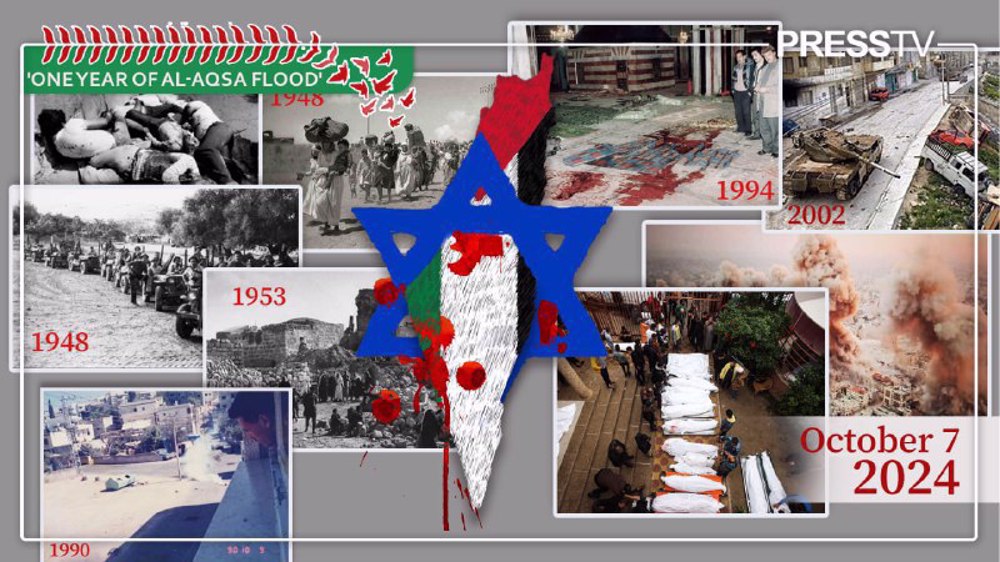

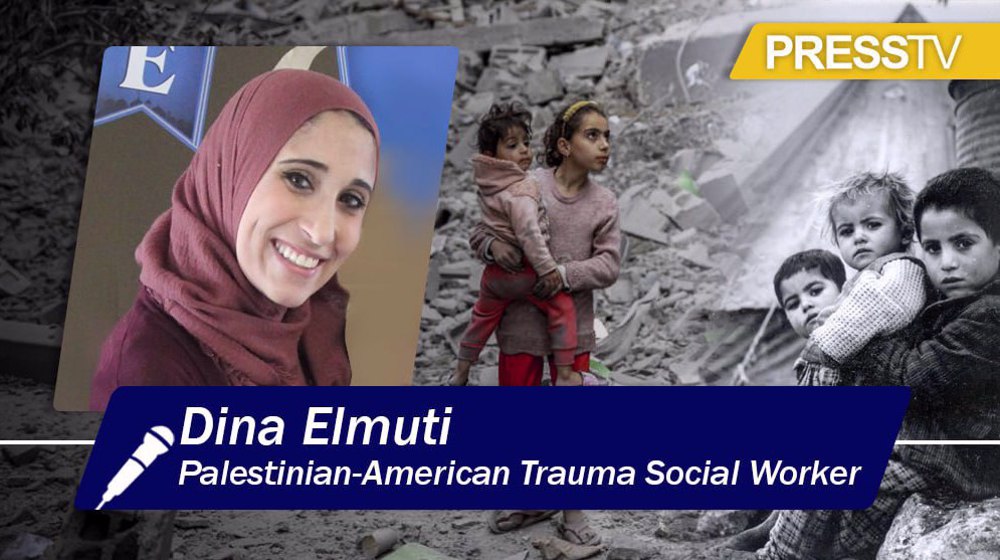
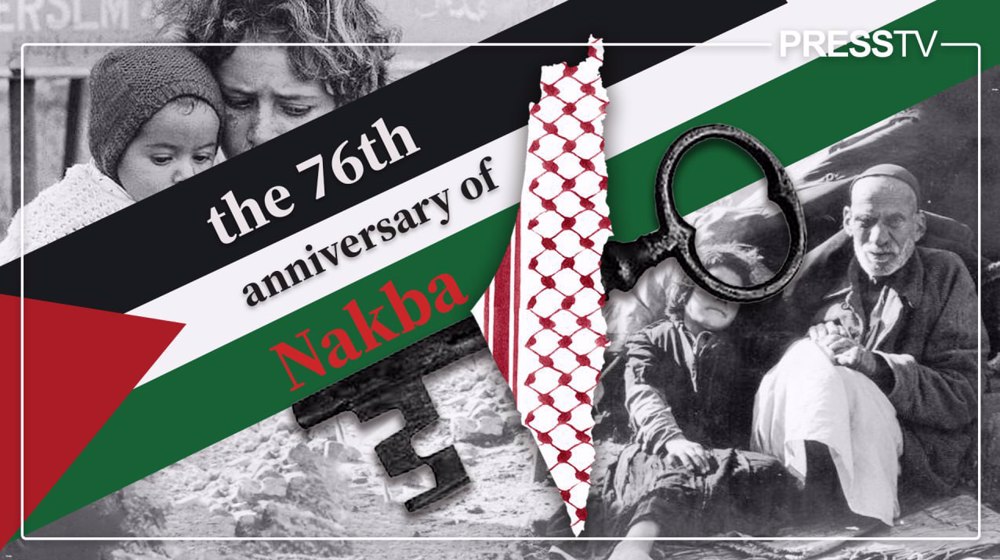
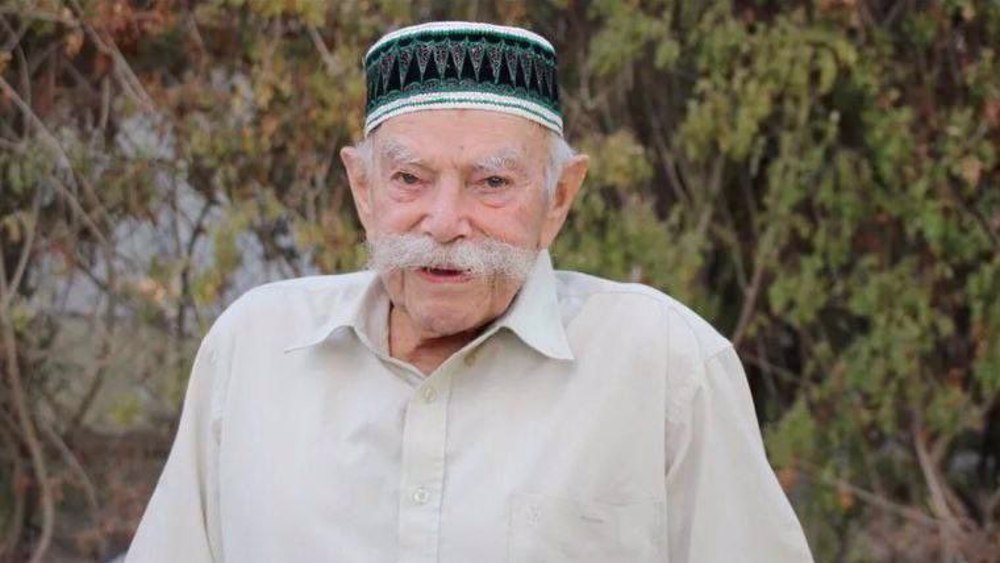

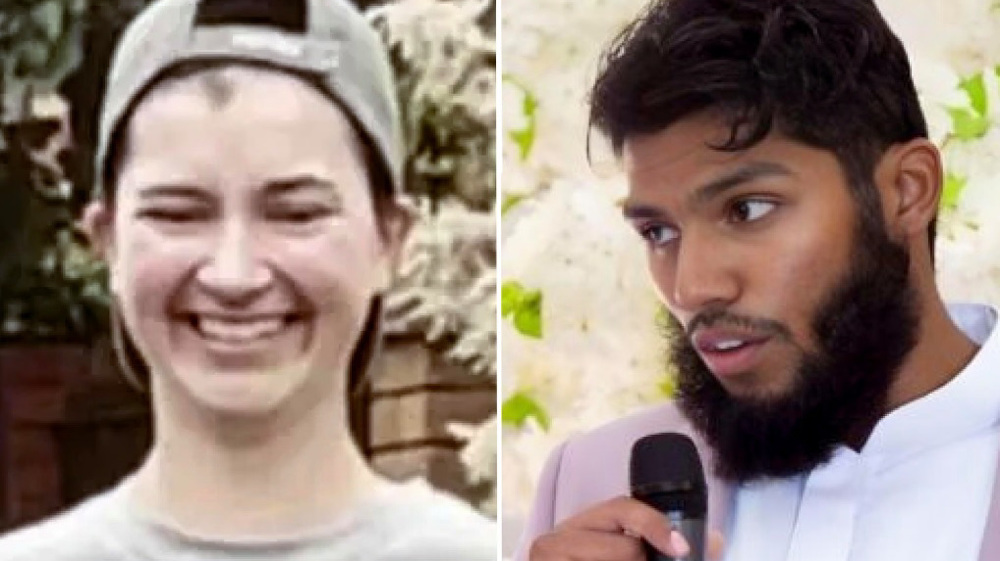




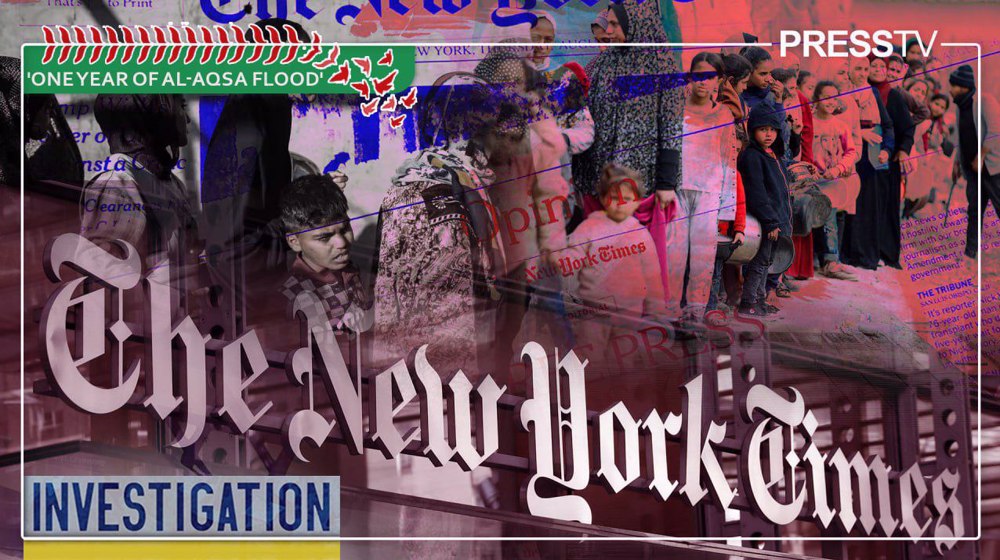
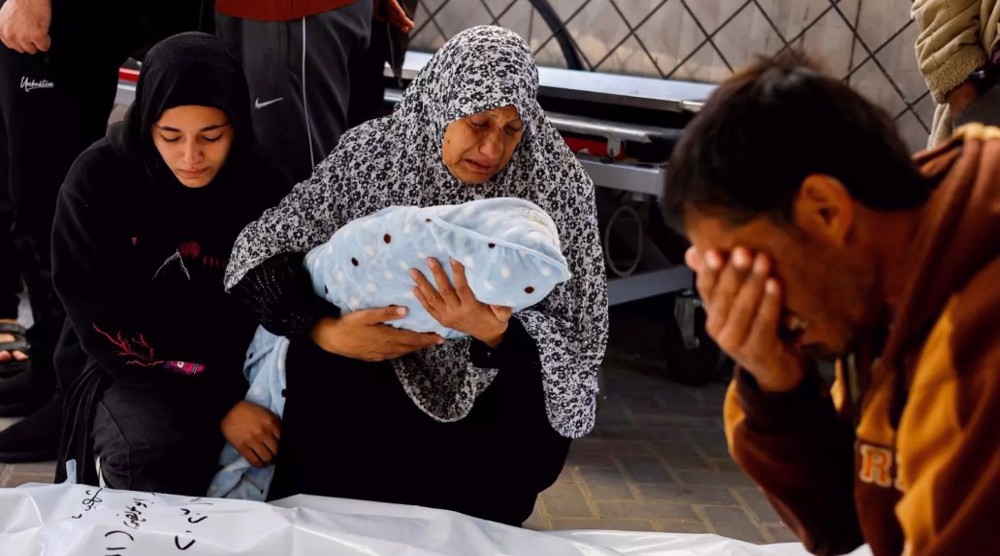
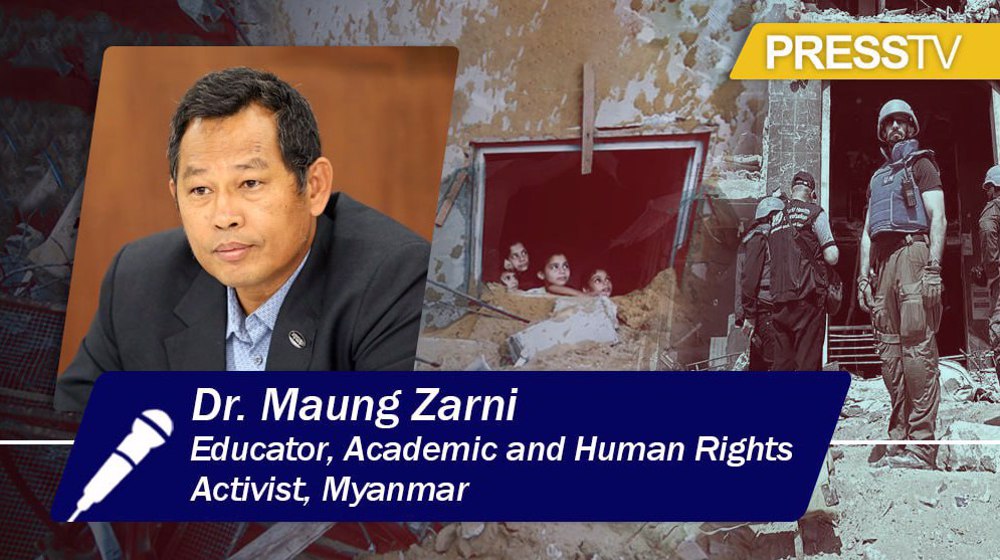
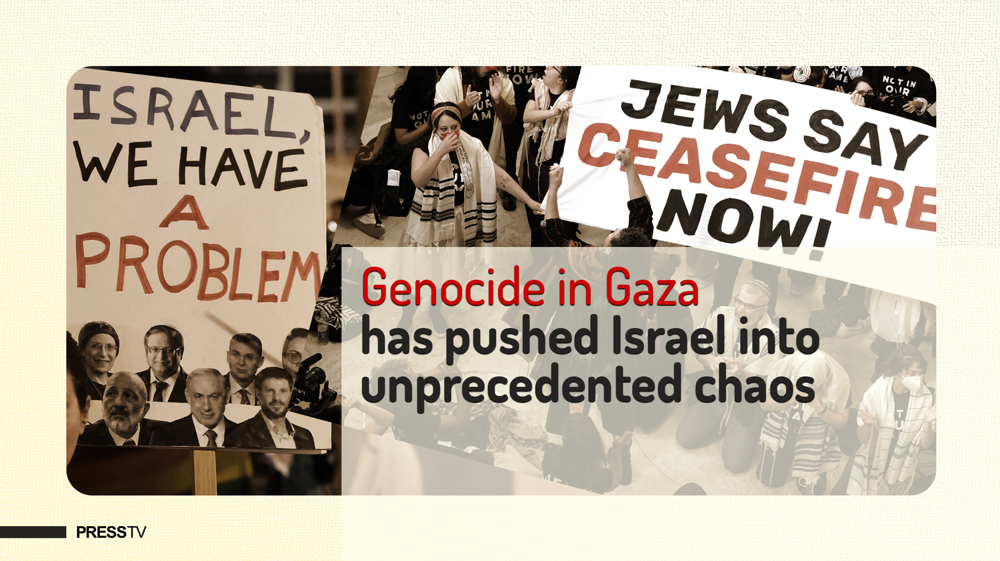
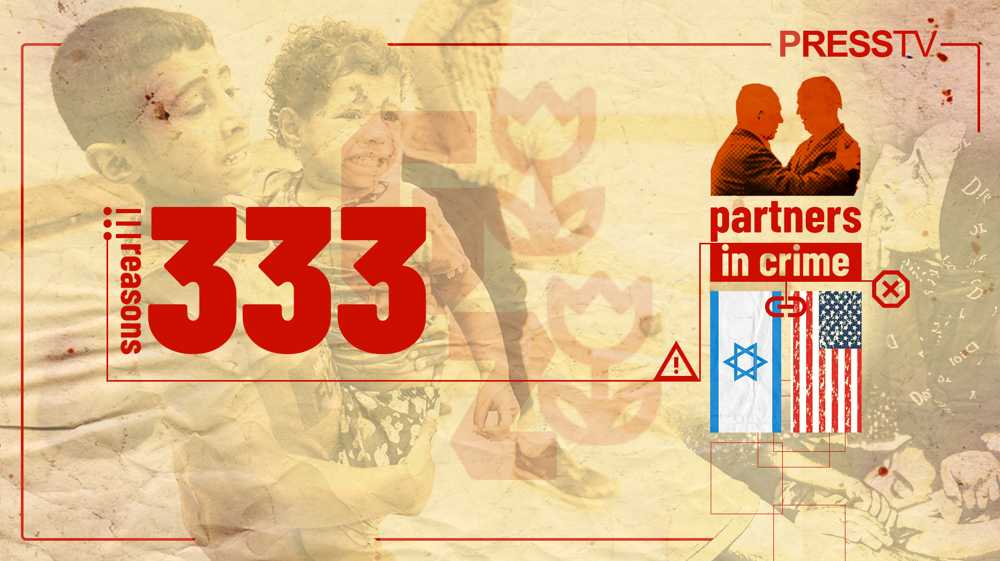

 This makes it easy to access the Press TV website
This makes it easy to access the Press TV website